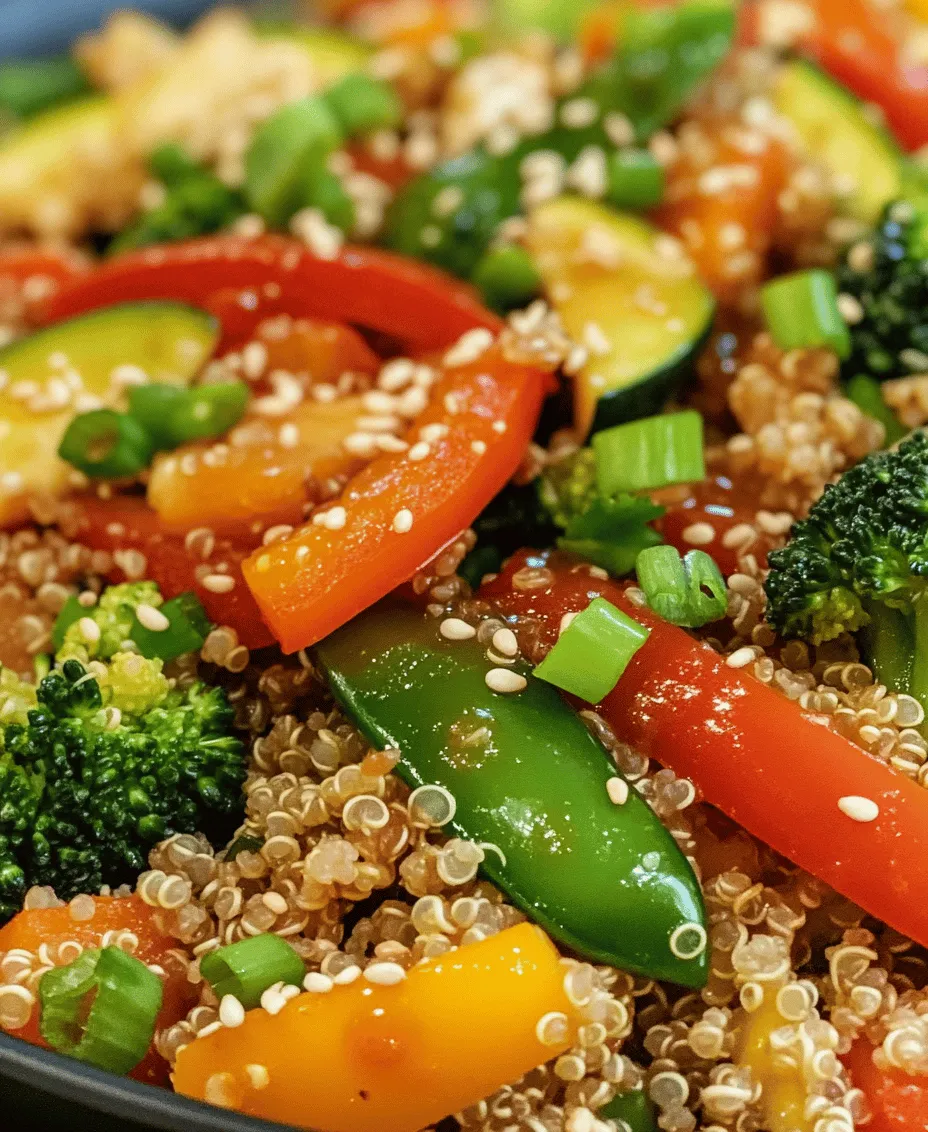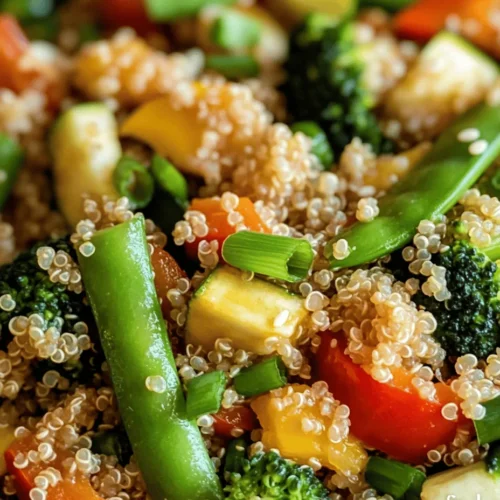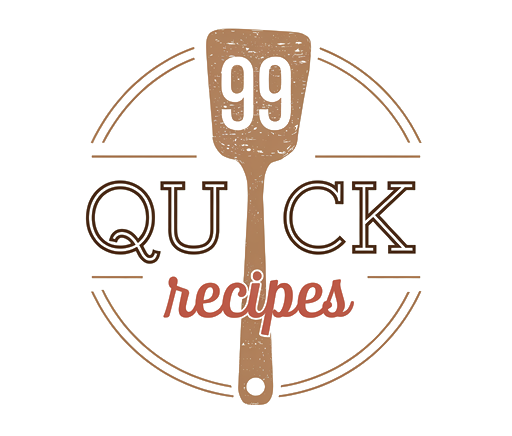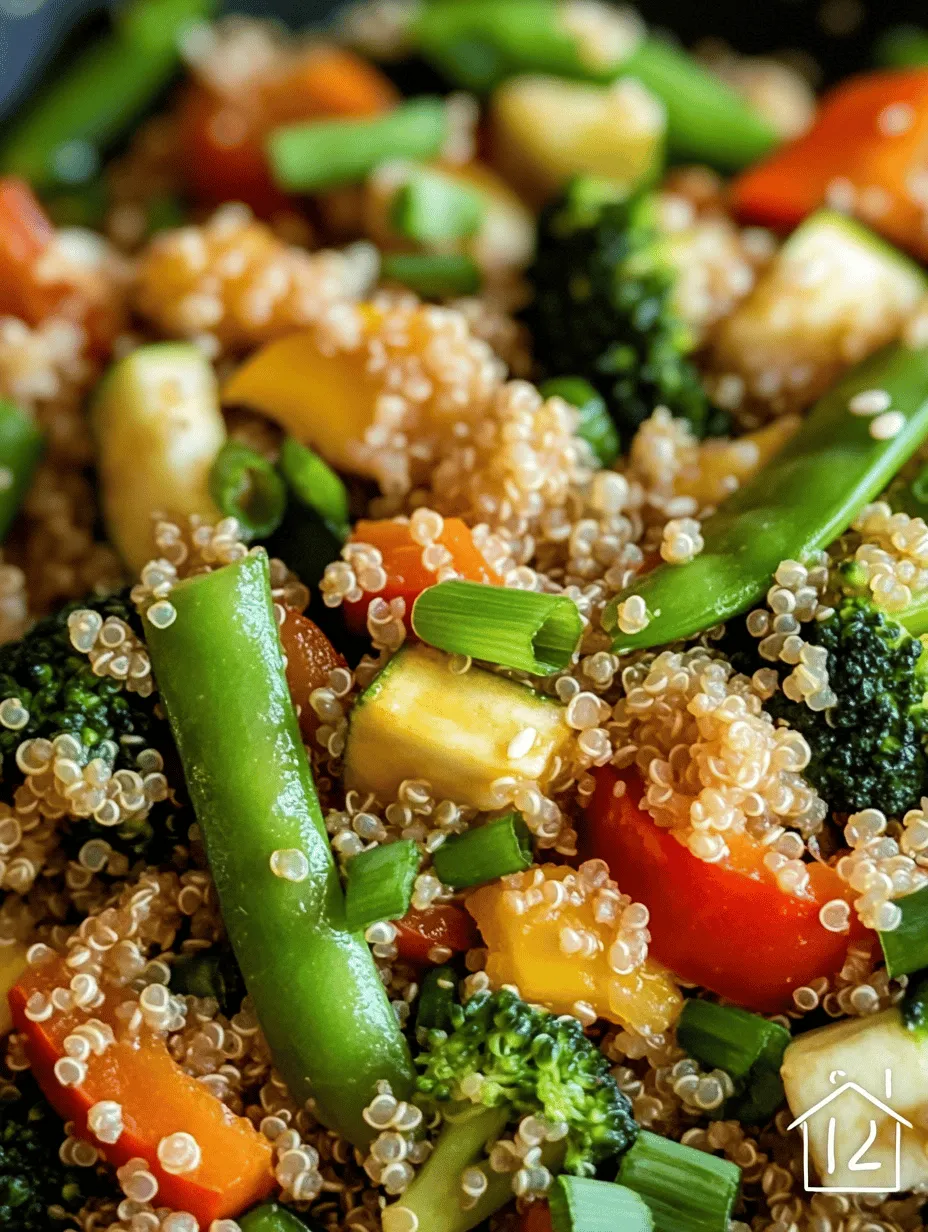In a world increasingly leaning towards plant-based meals, the Wholesome Quinoa & Veggie Stir-Fry stands out as a delicious and nutritious option that caters to both health-conscious eaters and busy lifestyles. This dish is not only a feast for the eyes with its vibrant colors but also a powerhouse of essential nutrients that can easily satisfy hunger while providing a multitude of health benefits. With its quick preparation time and flexibility in ingredients, this stir-fry is perfect for weeknight dinners or meal prep for the busy days ahead.
As more individuals embrace plant-based diets, the importance of incorporating whole grains and a variety of vegetables into our meals cannot be overstated. Whole grains, such as quinoa, are integral to a balanced diet, offering a rich source of protein, fiber, vitamins, and minerals that our bodies crave. The Wholesome Quinoa & Veggie Stir-Fry is an excellent example of how to combine these elements into one delightful dish that bursts with flavor and nutrition. Whether you’re a seasoned vegetarian or just looking to add more plant-based meals to your repertoire, this stir-fry is a fantastic choice that offers endless customization options.
Understanding Quinoa: A Nutritional Powerhouse
Overview of Quinoa
Quinoa, often hailed as a superfood, has gained immense popularity over the past few decades, and for good reason. This ancient grain, which hails from the Andean region of South America, has been cultivated for thousands of years and was a staple food for the Inca civilization. Its unique properties make it an exceptional addition to any diet, particularly for those seeking nutritious alternatives to traditional grains.
Nutritional Profile
One of the standout features of quinoa is its impressive nutritional profile. Unlike most grains, quinoa is a complete protein, meaning it contains all nine essential amino acids that our bodies cannot produce on their own. This makes it an excellent protein source for vegetarians and vegans. A typical serving of cooked quinoa (about one cup) provides approximately 8 grams of protein, alongside 5 grams of fiber, making it a filling option that can help regulate appetite.
In addition to protein and fiber, quinoa is packed with essential vitamins and minerals, including magnesium, B vitamins, iron, and potassium. These nutrients support various bodily functions, from energy production to muscle health.
Health Benefits of Quinoa
Including quinoa in your diet can yield numerous health benefits. Its high fiber content aids in digestion, promotes a feeling of fullness, and can help maintain healthy blood sugar levels. Additionally, the antioxidants found in quinoa help combat inflammation and support overall heart health.
Quinoa is also a gluten-free grain, making it an ideal choice for individuals with gluten sensitivities or celiac disease. As more people seek to reduce gluten in their diets, quinoa serves as a versatile substitute for traditional grains in various recipes.
Choosing the Right Vegetables for Your Stir-Fry
The Importance of Fresh Produce
When it comes to making a delicious stir-fry, the quality of your ingredients can make all the difference. Fresh, vibrant vegetables not only enhance the flavor of your dish but also provide essential nutrients that contribute to a balanced diet. Seasonal and locally sourced vegetables are often at their peak in terms of taste and nutritional value, making them the best choice for your Wholesome Quinoa & Veggie Stir-Fry.
Suggested Vegetables for Quinoa Stir-Fry
Incorporating a variety of vegetables into your stir-fry not only adds color but also boosts the nutritional content of the meal. Here are some suggested vegetables that work beautifully in a quinoa stir-fry:
– Broccoli: Rich in vitamins C and K, fiber, and antioxidants, broccoli is a cruciferous vegetable that adds a satisfying crunch to your stir-fry. Its nutrient density supports immune function and overall health.
– Zucchini: Low in calories and high in water content, zucchini is a fantastic way to add bulk to your stir-fry without extra calories. It’s also a good source of vitamin A and potassium.
– Bell Peppers: Available in a rainbow of colors, bell peppers are high in vitamin C and antioxidants. Their sweet, crisp texture complements the nuttiness of quinoa perfectly.
– Snap Peas: These sweet and crunchy peas add a delightful freshness to your dish. They are high in fiber and vitamin K, making them a nutritious choice.
Tips for Substituting Vegetables
One of the best aspects of a stir-fry is its versatility. Feel free to customize your Wholesome Quinoa & Veggie Stir-Fry based on personal preferences or seasonal availability. If you have a favorite vegetable that’s not listed, incorporate it! Some other great options include carrots, asparagus, mushrooms, and bok choy. The key is to balance flavors and textures while considering the cooking time for each vegetable to ensure even cooking.
Essential Ingredients for Quinoa & Veggie Stir-Fry
Overview of Key Ingredients
The Wholesome Quinoa & Veggie Stir-Fry relies on a few essential ingredients that not only contribute to the overall flavor but also enhance the dish’s nutritional value. Here’s a breakdown of each ingredient’s purpose in the recipe.
– Quinoa: As the base of the stir-fry, quinoa provides a nutty flavor and a hearty texture while serving as the primary source of protein.
– Vegetables: A colorful mix of fresh vegetables adds flavor, nutrients, and visual appeal to the dish.
– Broth or Water: Using vegetable broth instead of water enhances the flavor profile of the quinoa, making it more aromatic and savory.
– Oils: The right cooking oils can elevate the taste of your stir-fry. Olive oil and sesame oil are excellent choices that add depth and richness.
The Role of Broths and Oils in Flavor Development
When preparing your Wholesome Quinoa & Veggie Stir-Fry, the choice of liquid can significantly impact the flavor. Vegetable broth adds a depth of flavor that plain water cannot provide, allowing the quinoa to absorb more taste during cooking. It’s advisable to use low-sodium broth to control the overall salt content of your dish.
In terms of oils, both olive oil and sesame oil serve distinct purposes. Olive oil is a heart-healthy fat that works well for sautéing vegetables, while sesame oil adds a unique, nutty flavor that can be used as a finishing touch or for drizzling just before serving. This combination creates a harmonious balance that enhances the overall taste of the stir-fry.
Understanding Soy Sauce and Its Alternatives
Soy sauce is a staple in many stir-fry recipes, providing umami flavor and a touch of saltiness. However, for those with gluten sensitivities, regular soy sauce can pose a problem. Tamari is a fantastic gluten-free alternative that retains the rich flavor of soy sauce while being safe for those with dietary restrictions.
When using soy sauce or tamari, consider the impact on the dish’s nutrition. While soy sauce does offer some health benefits, such as being a source of protein and certain vitamins, moderation is key due to its sodium content. For those looking to reduce their sodium intake further, low-sodium versions of these sauces are widely available.
Step-by-Step Guide to Making Quinoa & Veggie Stir-Fry
Once you have gathered all your ingredients and chosen your favorite vegetables, you’re ready to embark on the journey of creating your Wholesome Quinoa & Veggie Stir-Fry. While the steps involved may seem straightforward, attention to detail will ensure a delicious result.
1. Prepare the Quinoa: Rinse 1 cup of quinoa under cold water to remove any bitterness. In a medium saucepan, combine the rinsed quinoa with 2 cups of vegetable broth or water. Bring to a boil, then reduce to a simmer, cover, and cook for about 15 minutes, or until the quinoa is fluffy and the liquid is absorbed.
2. Chop the Vegetables: While the quinoa is cooking, wash and chop your selected vegetables into bite-sized pieces. Aim for uniform sizes to ensure even cooking.
3. Heat the Oil: In a large skillet or wok, heat 2 tablespoons of olive oil over medium-high heat. Once the oil is shimmering, add your chopped vegetables and stir-fry for about 5-7 minutes, or until they are tender-crisp.
4. Combine Quinoa and Vegetables: Once the vegetables are cooked to your liking, add the cooked quinoa to the skillet. Gently fold everything together, ensuring that the quinoa and vegetables are evenly mixed.
5. Add Flavorings: Drizzle in 2 tablespoons of soy sauce or tamari and a splash of sesame oil. Stir to combine, allowing the flavors to meld together for an additional 2-3 minutes.
6. Taste and Adjust: Taste your stir-fry and adjust the seasonings as necessary. You may want to add more soy sauce, a pinch of salt, or even a dash of red pepper flakes for some heat.
7. Serve and Enjoy: Once everything is combined and heated through, serve your Wholesome Quinoa & Veggie Stir-Fry immediately. Garnish with sesame seeds or chopped green onions if desired.
This step-by-step guide ensures that your stir-fry is not only nutritious but also a delight to the senses, providing a perfect meal for any occasion.
As you dive deeper into the world of plant-based cooking, the Wholesome Quinoa & Veggie Stir-Fry will become a staple in your kitchen, offering a quick, healthy, and flavorful option that you can enjoy any night of the week. With its myriad of benefits and customizable nature, this dish perfectly exemplifies how easy and delicious healthy eating can be.

Preparing the Quinoa
To achieve the perfect quinoa for your stir-fry, begin by rinsing it thoroughly. This step is crucial as it removes the natural coating called saponin, which can impart a bitter taste to the grain. Place the desired amount of quinoa in a fine-mesh strainer and rinse it under cold running water for about 2 minutes. Gently rub the grains with your fingers to ensure that all saponin is washed away.
Once rinsed, it’s time to cook the quinoa. For optimal texture, the standard ratio is 1 cup of quinoa to 2 cups of water or vegetable broth. Using broth instead of water adds an additional layer of flavor. Bring the liquid to a boil in a saucepan, add the rinsed quinoa, and stir briefly. Reduce the heat to low, cover the pot, and simmer for about 15 minutes, or until the quinoa has absorbed all the liquid and is tender.
After cooking, remove the pot from the heat and let it sit, covered, for an additional 5 minutes. This resting period allows the quinoa to steam, making it fluffy. Fluff the quinoa gently with a fork before using it in your stir-fry.
Sautéing the Vegetables
Sautéing vegetables is a critical step in creating a delicious stir-fry, and it requires attention to heat control and timing. Start by heating a tablespoon of oil in a large skillet or wok over medium-high heat. Once the oil is shimmering, add your protein (if using) first, allowing it to cook thoroughly before moving on to the vegetables.
Begin with aromatics like onion and garlic, as they form the base of your stir-fry’s flavor profile. Sauté these ingredients for 1-2 minutes until they become translucent and fragrant. Next, add your harder vegetables, such as carrots and bell peppers, which take longer to cook. Stir-fry these for about 3-5 minutes, or until they are just tender.
Finally, incorporate softer, quicker-cooking vegetables like zucchini or spinach. These should be added towards the end of the cooking process to prevent overcooking. Stir-fry everything together for another 2-3 minutes, ensuring that all the vegetables remain vibrant and crisp. The key is to keep the vegetables moving in the pan, allowing them to cook evenly without losing their texture.
Combining Ingredients
Once your quinoa is perfectly cooked and your vegetables are sautéed to perfection, it’s time to combine the two. Start by adding the cooked quinoa to the pan with the sautéed vegetables. Use a spatula to gently fold the quinoa into the vegetable mixture, ensuring even distribution.
Next, it’s time to introduce your sauces and seasonings. A simple combination of soy sauce, sesame oil, and a splash of rice vinegar works wonders, but feel free to get creative! Add these ingredients gradually, starting with a couple of tablespoons and adjusting to taste. This layering technique ensures that every grain of quinoa and piece of vegetable is evenly coated and flavorful.
As you combine the ingredients, keep an eye on the heat. It’s best to maintain a medium-high heat during this step to allow for a slight crispness while the flavors meld. Stir everything together for about 2-3 minutes, making sure the quinoa is heated through and the vegetables are well incorporated.
Serving Suggestions and Pairings
To serve your quinoa and veggie stir-fry, aim for a warm presentation that highlights the vibrant colors of the vegetables. A shallow bowl is ideal, allowing the quinoa to shine as the base of your dish. For an added touch, garnish with finely chopped green onions and a sprinkle of sesame seeds. This not only enhances the visual appeal but also adds a delightful crunch.
For complementary dishes, consider serving your stir-fry alongside steamed dumplings or a light salad with a citrus vinaigrette. If you’re looking to enhance the protein content of your meal, grilled chicken, tofu, or shrimp can be excellent additions. These pairings not only round out the meal but also elevate the overall dining experience.
For a creative serving style, consider a bowl presentation. Layer the quinoa first, followed by the sautéed vegetables, and top with your protein. This style allows for a visually appealing arrangement and encourages diners to mix their ingredients as they eat, enhancing the flavors with every bite.
Storing and Reheating Leftovers
Storing your quinoa stir-fry properly is essential to maintain its freshness and flavor. Allow the dish to cool completely before transferring it to an airtight container. It can be stored in the refrigerator for up to 4 days. For longer storage, consider freezing portions of the stir-fry for up to 3 months. When freezing, use freezer-safe containers and label them with the date for easy tracking.
When it comes to reheating, the goal is to maintain the flavor and texture of your stir-fry. For best results, reheat in a skillet over medium heat. Add a splash of water or vegetable broth to prevent the quinoa from drying out. Stir occasionally until heated through, adjusting the seasoning if necessary.
Alternatively, you can use a microwave for quick reheating. Place the stir-fry in a microwave-safe bowl and cover it with a damp paper towel to retain moisture. Heat in 30-second intervals, stirring in between, until hot. Be mindful not to overheat, as this can lead to a loss of texture.
Nutritional Impact of Quinoa & Veggie Stir-Fry
Quinoa and veggie stir-fry is not only delicious but also packed with nutritional benefits. A typical serving of this dish provides a well-rounded balance of macronutrients. On average, a serving contains approximately 250-300 calories, depending on the amount of oil and additional proteins used.
Quinoa is a complete protein, meaning it contains all nine essential amino acids, making it an excellent choice for vegetarians and vegans. It also boasts a significant amount of fiber, which aids in digestion and promotes a feeling of fullness. The variety of vegetables included in the stir-fry contributes vitamins and minerals such as vitamin A, C, potassium, and folate, which are essential for overall health.
Incorporating stir-fry into a balanced diet is easy. This dish can be enjoyed as a main meal or as a side dish, providing versatility for different dietary needs. By varying the vegetables and proteins used, you can tailor this recipe to fit any dietary preference, ensuring it remains a staple in your meal rotation.
Conclusion: Embracing Healthy Eating with Quinoa & Veggie Stir-Fry
Quinoa and veggie stir-fry is a nutritious, easy-to-make meal that can fit seamlessly into various dietary lifestyles. Its versatility allows for endless combinations of vegetables and proteins, encouraging creativity in the kitchen. This dish not only satisfies your hunger but also supports a healthy lifestyle, providing essential nutrients in every bite.
As you experiment with this recipe, don’t hesitate to try different vegetables, sauces, or seasonings to make it your own. The joy of cooking lies in exploration, so embrace the process and enjoy creating wholesome dishes at home. Remember, mindful eating is about savoring the flavors and appreciating the effort that goes into each meal, making every dining experience both nourishing and enjoyable.


